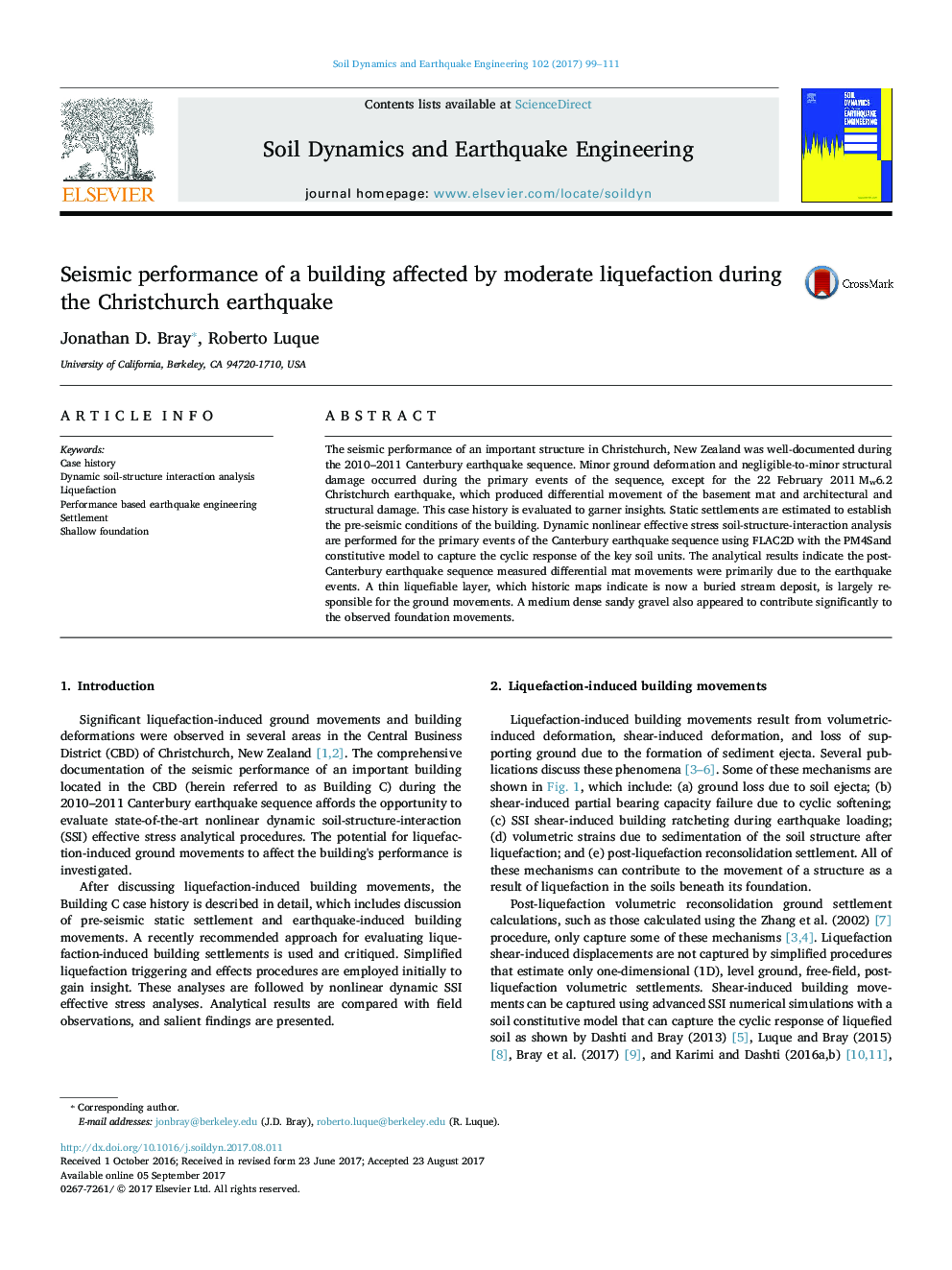| کد مقاله | کد نشریه | سال انتشار | مقاله انگلیسی | نسخه تمام متن |
|---|---|---|---|---|
| 4927068 | 1431691 | 2017 | 13 صفحه PDF | دانلود رایگان |
- A detailed case history of the seismic performance of a shallow-founded structure built on a site largely composed of medium dense sands and gravels is presented.
- A layer of liquefiable soils was found in an area shown on historic maps as a stream, which was likely buried during city development. The cyclic response of this relatively thin layer played a significant role in the seismic performance of the structure.
- Fully nonlinear effective stress dynamic soil structure interaction analyses indicate that shear-induced settlement mechanisms governed the differential settlement of the structure.
- Advancing the CPT through dense gravel to characterize the potentially liquefiable soil layers at the site was critical to obtaining reasonable results from the numerical simulations.
- A recently proposed approach for evaluating liquefaction-induced building settlement is employed and critiqued.
The seismic performance of an important structure in Christchurch, New Zealand was well-documented during the 2010-2011 Canterbury earthquake sequence. Minor ground deformation and negligible-to-minor structural damage occurred during the primary events of the sequence, except for the 22 February 2011Â Mw6.2 Christchurch earthquake, which produced differential movement of the basement mat and architectural and structural damage. This case history is evaluated to garner insights. Static settlements are estimated to establish the pre-seismic conditions of the building. Dynamic nonlinear effective stress soil-structure-interaction analysis are performed for the primary events of the Canterbury earthquake sequence using FLAC2D with the PM4Sand constitutive model to capture the cyclic response of the key soil units. The analytical results indicate the post-Canterbury earthquake sequence measured differential mat movements were primarily due to the earthquake events. A thin liquefiable layer, which historic maps indicate is now a buried stream deposit, is largely responsible for the ground movements. A medium dense sandy gravel also appeared to contribute significantly to the observed foundation movements.
Journal: Soil Dynamics and Earthquake Engineering - Volume 102, November 2017, Pages 99-111
